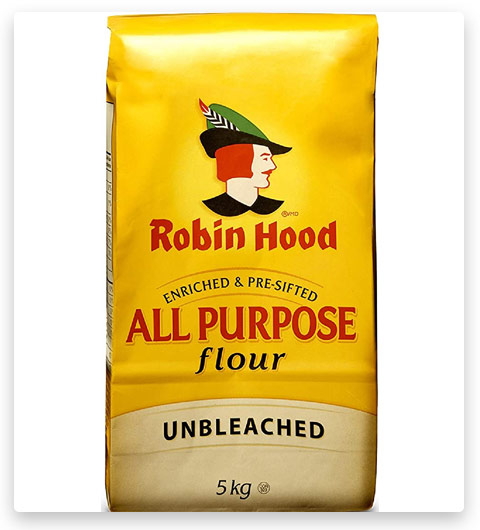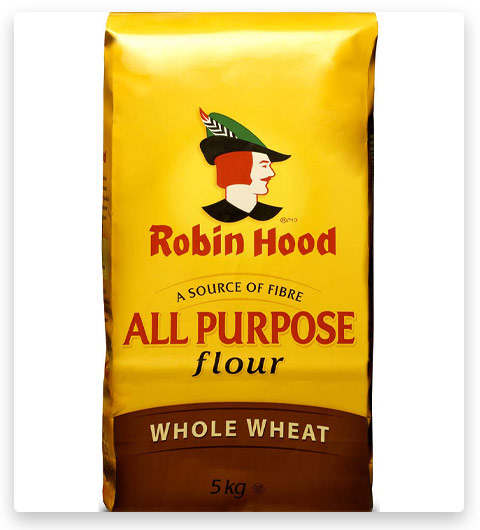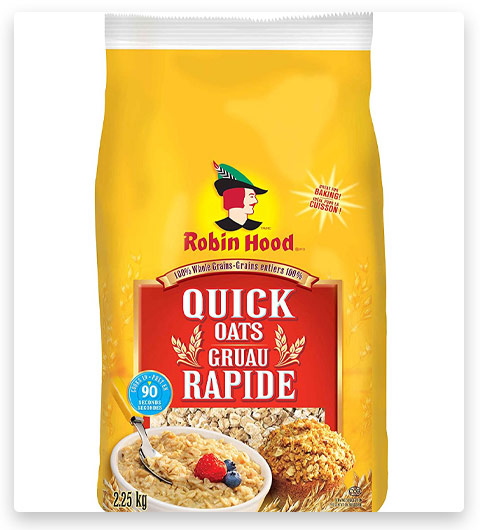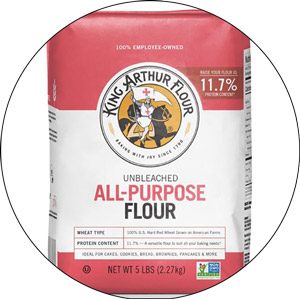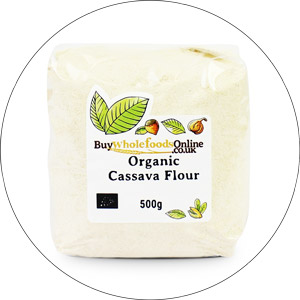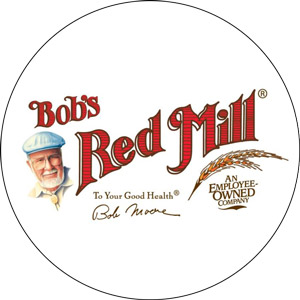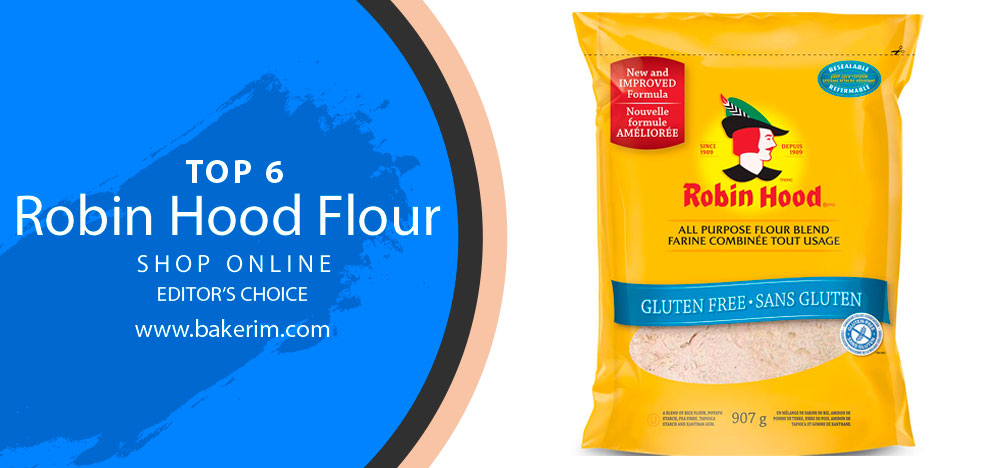
The Robin Hood brand produces a variety of flours that are most remembered and preferred by American families for the easy preparation of a variety of classic sweet and savory national gastronomy dishes.
Robin Hood Flour – A Classic That Is Updated
Robin Hood presented a new packaging with a modern minimalistic design, simple graphics with an updated look. Robin Hood introduces new packaging with a modern, minimalist design, simple graphics with an updated air that does not lose touch, in line with more than 60 years of tradition on the market.
A classic updated to adapt to the prevailing visuals, with restraint and sophistication. Simple design lines and the use of transparencies in line with global trends in the food industry are great allies that showcase the brand’s high value and credible attributes, highlighting vitamin and mineral enrichment.
Positioned in the country as a symbol of celebration and creativity, the new label is reminiscent of the family legacy of Robin Hood’s flour to ensure safety to be pampered at a table with the highest quality food.
About the Brand Robin Hood
Originally established as a brand of Moose Jaw Milling Company by miller Donald McLean in 1900. In 1909 the New Prague Flouring Mill (Minnesota), owned by Francis Atherton Bean of Minneapolis, bought the mill. The company has manufactured flour under the brand names Radium, Keynote, Sakana, and Robin Hood. Through a series of acquisitions and restructuring, the company became International Multifoods Corporation in 1970. The corporation’s Moose Jaw plant closed in 1966 due to overcapacity; the factory was destroyed, but the grain bins and elevator are still used as a domestic terminal. The newer Saskatoon plant (built-in 1928) continues to produce Robin Hood’s trademark flour.
In June 2004 J.M. The Smucker Company purchased three flour mills in Canada from Multisource International, including the Robin Hood brand. In 2006, Smuckers announced the sale of mills in Canada for the US $ 78 million to the Horizon Grinding G.P., Cargill unit. Under the agreement, Horizon Grinding owns and operates Canadian factories in Saskatoon, Montreal, and Burlington that manufacture Robin Hood branded products. Horizon Flour Markets Robin Hood products directly to the foodservice and industrial sectors in Canada, the US, and the Caribbean. Smuckers continues to sell Robin Hood products to the retail market.
Contents
- 1 Robin Hood Flour – A Classic That Is Updated
- 2 Our Top List 6 Best Robin Hood All Purpose Unbleached Flour – Editor’s Choice
- 2.1 1# Robin Hood Original All Purpose Flour 1kg
- 2.2 2# Robin Hood All Purpose Unbleached Flour 5kg bag {Imported from Canada}
- 2.3 3# Robin Hood Best for Cake & Pastry Flour {Imported from Canada}
- 2.4 4# Robin Hood All Purpose Flour Whole Wheat 5kg {Imported from Canada}
- 2.5 5# Robin Hood 100% Whole Grains Quick Oats 2.25kg {Imported from Canada}
- 2.6 6# Robin Hood Gluten-Free All-Purpose Flour Blend 907g {Imported from Canada}
- 3 What is All-Purpose Flour?
Our Top List 6 Best Robin Hood All Purpose Unbleached Flour – Editor’s Choice
1# Robin Hood Original All Purpose Flour 1kg
Robin Hood Original All Purpose Flour, made from red spring durum wheat and soft wheat, breaks down the stereotypes that baked goods are bad for your health and shape. All-purpose flour contains between 8% and 11% protein. This flour is suitable for making the best crusty pies, biscuits, instant bread, pancakes, or waffles. Also use it to make yeast bread, yeast, and yeast-free puff pastry, strudel, Yorkshire pudding, eclairs, profiteroles, and buns
2# Robin Hood All Purpose Unbleached Flour 5kg bag {Imported from Canada}
All-purpose flour can be used in many recipes as it is suitable for all types of baked goods. Robin Hood All Purpose Unbleached Flour works for everything from bread and rolls to cakes, cookies, and pastries. The shelf life of flour at room temperature is up to 8 months. This flour is made from hard red spring wheat and soft wheat and has a yellow grain color.
3# Robin Hood Best for Cake & Pastry Flour {Imported from Canada}
The main component of Robin Hood Cake & Pastry Flour is premium wheat flour, which is made from soft wheat varieties. It has a high proportion of gluten, due to which the dough is more elastic, and the finished baked goods are surprisingly tender with a uniform fine-pored structure. Along with this, salt and soda are already included in the flour. The first, as you know, makes the dough stronger and helps it keep its shape better. Soda, in turn, acting as baking powder, gives homemade baked goods a splendor and lightness. This flour is ideal for baking cakes, pies, muffins.
4# Robin Hood All Purpose Flour Whole Wheat 5kg {Imported from Canada}
All-purpose flour is flour made from wheat grains after the grain has been peeled off. Robin Hood All-Purpose Flour has an average gluten content of around 12%. This makes it suitable for baked goods including loaves of bread, biscuits, pastry baked goods, and pastries.
5# Robin Hood 100% Whole Grains Quick Oats 2.25kg {Imported from Canada}
Robin Hood Whole Grains Quick Oats contains only whole grains. During production, all its parts and a maximum of useful substances are preserved: nutritious endosperm, grain germ rich in vitamins, and bran containing fiber. Flakes are made from whole, unpolished grain by crushing it, not extruded. Without any heat treatment, so the flakes have all the beneficial properties of whole grains. You can use 100% whole grains for breakfast or for various baking.
6# Robin Hood Gluten-Free All-Purpose Flour Blend 907g {Imported from Canada}
All-purpose flour for making bread, pies, cookies, cakes, muffins, and other gluten-free products. Flour is made with xanthan gum. Xanthan gum is a natural polysaccharide that has stabilizing and emulsifying properties. It is a thickener and stabilizer. It replaces gluten as it gives the softness that everyone loves in baking.
What is All-Purpose Flour?
What is all-purpose flour is a question that often comes to people’s minds as there are so many types of flour on the market. Flour is a generic word used to refer to the finely ground powder of any kind of food grain. Whole wheat flour is the most commonly used type of flour, there are many other names you come across when looking for flour in the supermarket. One kind called all-purpose flour is very confusing to some people as they cannot figure out where to use this flour. This article tries to clear up all the confusion about this all-purpose flour. Robin Hood also makes this kind of flour, so it’s worth understanding what Robin Hood Original All Purpose Flour is.
Why is This Called All-Purpose Flour?
The flour, called all-purpose flour, is neither high nor low in gluten. Because of its medium-range of gluten, it is considered suitable for making a wide variety of bread and baked goods. It can make baked goods, cakes, and bread of all kinds. All-purpose flours typically contain 12% gluten.
- White Color. All-purpose flour is white in color, as it is highly refined and made after removing the shell from wheat grains, which give the brown color to bread flour and whole-grain flours. This is done after several stages of grinding, cleaning, and bleaching. Usually, it is a mixture of durum and soft wheat. Durum wheat is high in gluten, while soft wheat is low in gluten. All-purpose flour has a very fine texture as it is ground using the wheat kernel.
- Vitamins are Added to Enrich it. In the United States, all flours made with the exception of the germ are required by law to contain certain amounts of thiamine, riboflavin, and iron. Manufacturers sometimes add vitamin A and vitamin D themselves and label their products as fortified. All-purpose flours can be bleached or unbleached, although both types can be used interchangeably. Bleaching can be natural or can be bleached using chemicals.
Difference Between Bread Flour and All-Purpose Flour?
The main difference between bread flour and all-purpose flour is their protein content. Bread flour has a higher protein content of about 12-14%, while all-purpose flour contains about 10-12% protein.
Bread flour and all-purpose flour are two types of flour that are used to make various flour products. Due to its high protein content, baked flour has an airy and elastic texture compared to all-purpose flour. All-purpose flour is commonly used in a variety of culinary products, while bread flour is mainly used for baking bread.
How to store Robin Hood Flour?
- Flour should be stored in a cool and dry place. The shelf life of any flour is limited, so manufacturers recommend storing flour for no more than 6 months. When flour is stored in the air, it oxidizes the oils and becomes rancid as a result. In hot weather, it is better to keep flour in the refrigerator.
- Flour should be stored in a closed container/jar/package. This will prevent it from absorbing moisture and foreign odors, and will also protect it from insects and rodents. If you freeze flour for 48 hours before putting it on the shelf, you are guaranteed to kill any insects or their eggs if they were already in the flour. If you are not using flour regularly enough, it is best not to mix old and new flour.
- Do not store flour near laundry detergent, onions, or other foods with strong odors.
- If there is room in the freezer, the flour can be well packed in airtight, moisture-proof containers, signed, and sent to the freezer. Thus, flour can be stored for several years.
- Whole wheat flour should be kept in the refrigerator at all times, as the natural oils in this flour quickly go rancid at room temperature.
- Throw away flour if it smells bad, changes color, or has insects in it.
- There is no need to buy large quantities of flour; buy as much flour as you need for a maximum of two to three months.
- Place the bay leaf in a container of flour to protect it from insects. Bay leaves are natural insect repellents.
Conclusion
Robin Hood produces high-quality healthy flour. It comes in handy packages that are easy to close to keep the flour from spoiling. Enjoy cooking with Robin Hood Flour!









